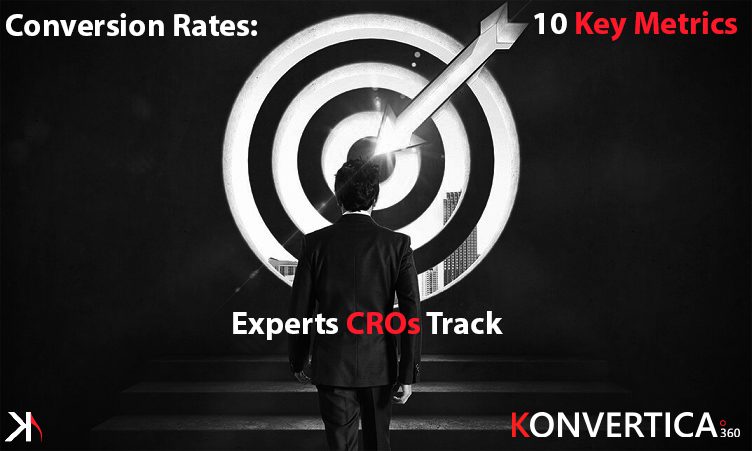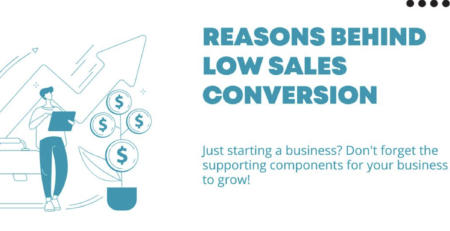Conversion Rates: 10 Key Factors to Watch to Make You an Expert Analyst
How to analyze your conversions like a pro
With the myriad metrics to track for better website conversions, you might feel like you need an expert analyst to make sense of everything. The feeling can be overwhelming, but fortunately, it’s not as difficult as it seems.
Konvertica has collated advice on ten key metrics and other factors to improve your conversion results. These tips come from many years of experience shared between our experts. We’ve collected data from the painstaking process of trial and error, in-depth analysis of both successes and failures, and we have come to a conclusion: knowing what to focus upon is the most important skill to improving your conversions. The process boils down to knowing how to ask the right questions and look for answers.
Learning the right aspects to focus upon is difficult and time-consuming, but Konvertica has identified a list of key elements to study so you can analyze your website performance like a pro.
1. Website Experience for First-Time Visitors
A business needs new customers to flourish, but acquiring new customers is among the most challenging business growth prospects. If you are struggling to attract new business, identify the primary challenges for your would-be customers.
What is your first-time website experience like? Is your website navigation struggling with inefficient page design, muddled messages, and annoying slowdown? Browse your website from a non-work-related station. What do you see? What prevents you from adequately accessing everything your website has to offer? The most common hindrance to new customers is a poor website experience for first-time users, leaving them frustrated and looking for other options.
The second reason is just that: other options. Your competition. Have they improved their website or branding? Has your competition changed a service, added a new feature, or updated themselves in any manner? This could speak to a surge of interest. It may be that their offerings are simply easier to access and create a more pleasing website experience. Think of websites you have been to and found too irritating to keep you, so you looked for another page.
Always remember the customer’s journey from the customer’s perspective and use that to help design with potential new customers in mind.
2. Understanding Your Target Market
You aren’t looking to get every user on the internet to your website. While that might seem ideal, trying too hard to appeal to everyone will leave your intended customers unenthused. Analyzing your target market is a must. You can certainly try to make your website appeal to others in order to draw new customers, but a proper strategy requires focus.
Study your target market. Is your traffic coming from that market? If not, then that suggests a disconnect somewhere in your SEO (search engine optimization), SEM (search engine marketing), or SMM (social media marketing) strategies. If your target demographics are not visiting your website, you can investigate and refine your approach to better appeal to that target market.
3. Page Exit Strategies
For your CRO strategy, you develop a sales funnel. The tried-and-true process walks customers through the entire journey from awareness of your product or service to the final action of completing a purchase. The page exit metrics show you precisely where people are leaving the page and your website, aborting their purchase. For example, if your landing page has the highest rate of page exits, you can work on improving that page’s design and content.
Identifying where people are losing interest in the sales funnel gives you the insight to make key changes that can really change the game. Lift your conversion rates by figuring out what’s wrong and testing adjustments.
4. Cost of Conversions
This can be a difficult metric to quantify, but it’s extremely important. What does it cost you to bring people to your product and successfully convert? For example, you sell a product for $4. You invest $100 in marketing and related elements and bring 100 visitors to your website. Twenty of those visitors make the purchase. You’ve sold $80 worth of product, but you spent $100 to achieve those 20 sales. Your conversion rate is 20%—respectable and within your goals—but you’ve netted a loss of $20. Conversions aren’t the problem here, but you must either adjust the price of your product or change your marketing strategy.
This metric goes to show you why pure conversion rates aren’t always the whole picture. It’s crucial to figure out what’s going wrong, even when it looks like things are going right.
5. “C” Student: CPM, CPA, and CPC
Let’s briefly look at an essential set of metrics related to the cost per conversion example touched on above. These factors help analyze the cost per conversion based on your total marketing budget. When trying to maximize your return on investment, you want to analyze your cost per mill (paying a publisher for the advertisement), cost per acquisition (paying a publisher only if the product is sold), and cost per click (paying the publisher only if someone clicks on the advertisement link). Each of these marketing options has different goals and benefits. If the cost per acquisition is returning more conversions, for example, you may want to invest more in it.
Conversely, if you see that CPM is not giving you enough return, you can look at options like changing publishers or trying a new marketing strategy.
6. Bounce Rates
Bounce rates refer to the visitors quickly leaving your website without performing any actions. High bounce rates can spell disaster, so it’s important to identify the root causes of the bounces quickly. Common reasons for a high bounce rate include:
- Difficult website navigation
- High website/page load time
- Broken links
- Unappealing content
Reducing your bounce rates involves fixing all of the above problems and ensuring your website experience remains pleasant from the very first click.
7. Returning Visitors
If people are regularly returning to your site, it’s a good indicator that your website is well-designed. Every visit is a potential conversion. Find out what is drawing your visitors back each time. Is there a particular page or product that appeals enough for repeated interest? For example, if you see that your return visitors are only reading the blogs and don’t purchase content or subscribe to the newsletter, you can put calls to action in the blog pages and convince readers to subscribe to a newsletter for similar and exclusive content or to buy the product.
8. Total Traffic Patterns
Analyze your total traffic patterns. The importance of this analysis can’t be overstated. For example, assume you notice a spike in visits during the weekend. If you choose to offer discounts or additional services on the weekends, you might increase your conversions with the influx of traffic. Keep in mind your conversion costs as you offer these deals, and always look for opportunities to improve your marketing based on this data. Keep your target market in mind as you refine your website experience based on total traffic patterns.
9. Mobile vs. Desktop Users
Where are most of your conversions originating? If you find through analysis that they’re coming from a particular type of device, such as mobile users, you can make adjustments to bring the website in line on the other types of devices. If you’re finding that mobile visitors have a low conversion rate, you can do further analysis to see where they’re struggling. If they average 7 minutes spent on the landing page, maybe the landing page is too overloaded with content for mobile visitors. Now you can design a separate landing page with more streamlined content for mobile users, and your conversion rates increase.
It’s a fact of life that mobile visitors make up a very significant portion of the market, so optimizing webpage experiences for both mobile and desktop users is vital to growth.
10. Traffic Sources
Last but not least, how you direct traffic your website is an essential element in converting that traffic. Typically, the three primary sources of traffic are direct URL visits (though rare), search engine query results (the all-important SEO), and referrals—visitors that come to your website through other websites, including social media platforms. Each source of traffic correlates to different levels of engagement on the website and different conversion rates. By analyzing which sources convert more often, you can properly measure the success of your SEO and SEM strategies.
Diversified traffic generators are a must for high conversion rates. Redundancy is another benefit; if you encounter difficulties with conversions in one area, you can exploit the other traffic sources to keep your business going strong while addressing the issues.
Konverting isn’t Just for Experts Anymore
Instrumental analysis of your conversion rates doesn’t need to belong only to the experts anymore. Understanding these ten metrics for conversion rate optimization will give you a much stronger foundation for increasing your conversions. Often, people become overwhelmed and fail to learn the most important lessons.
Konvertica says that consistency in your conversion rates depends on understanding the core elements that underlie the conversions. Many people think of these as something only expert analysts can identify, but Konvertica has discovered that what feels overwhelming often isn’t nearly as confusing as it seemed. Learn how to focus your analysis on just one avenue at a time and you’ll find the results far more illuminating.
How do you analyze conversion rates? By asking the right questions. Learning to ask the right questions is a difficult process, but by following this guide, you can start with some of the most fundamental questions and build upon that data. Keep your goals realistic, carefully analyze each conversion area, and always keep in mind the customer’s journey.
The expertise is in your hands when you follow Konvertica’s guidelines for ten important factors in optimizing your conversion rates.


